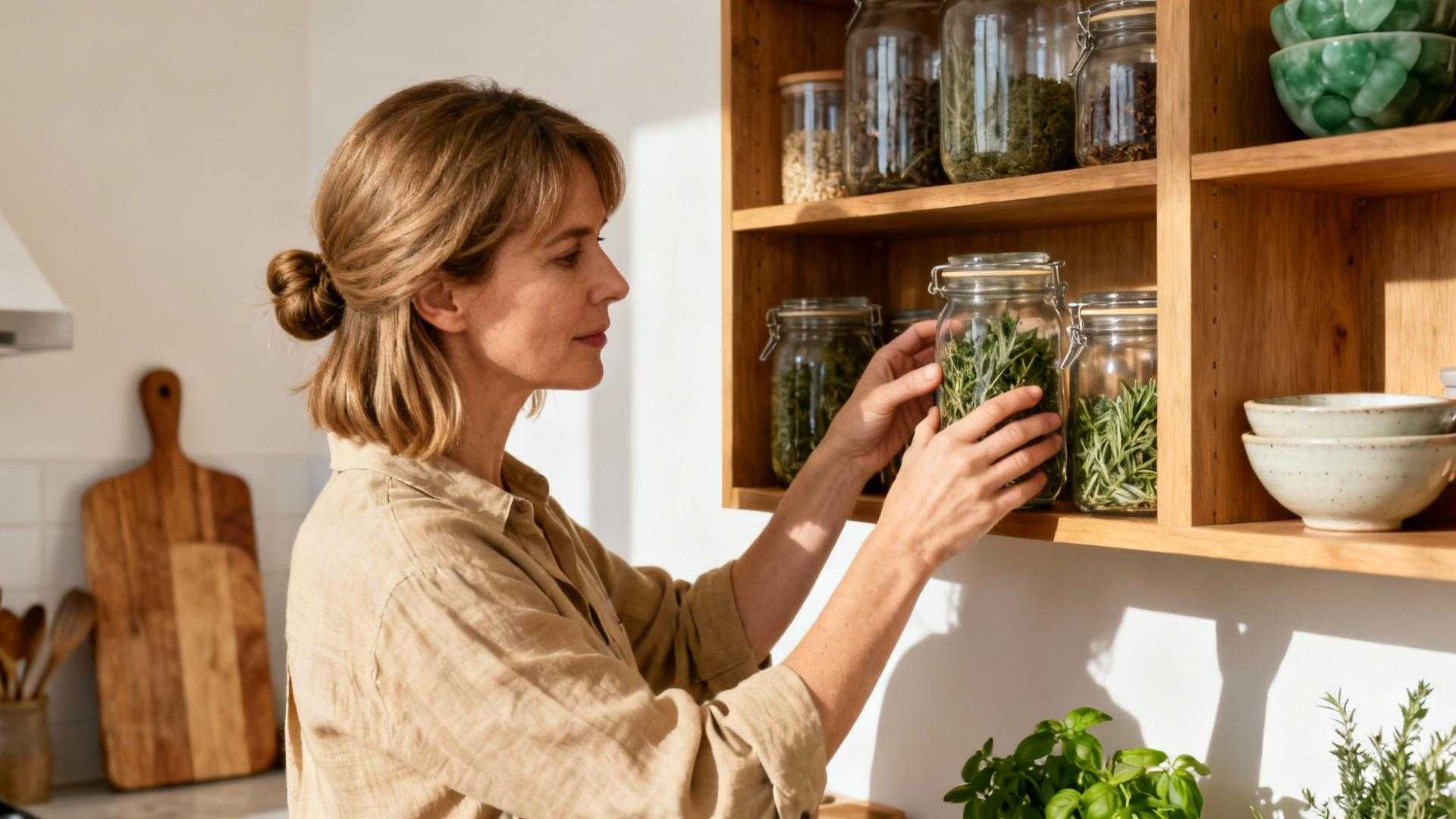Walking into a French kitchen feels different. There’s a sense of calm purpose, where every pot has its place and cooking flows effortlessly. It’s not about expensive renovations or designer cabinets—it’s about nine simple habits that transform chaotic meal prep into a peaceful ritual. These time-tested practices combine function with beauty, creating spaces that work as hard as they look good.
The mise en place philosophy that changes everything
French cooks swear by mise en place—gathering and organizing ingredients before you start cooking. This professional chef technique eliminates kitchen chaos and reduces cooking time by nearly 30%. Michele Ekins, a culinary expert, explains it perfectly: “Mise en place is not just a cooking technique; it’s a philosophy that transforms kitchen chaos into calm.”
Even on busy weeknights, spending five minutes prepping ingredients creates a restaurant-quality cooking experience at home. Everything you need sits within arm’s reach, making dinner prep feel more like therapy than work.
Create zones that actually make sense
French kitchens divide space into functional zones—a coffee station for peaceful mornings, a prep corner for chopping and mixing, a baking hub for weekend treats. This zoning approach streamlines workflow and eliminates the frustration of running back and forth across the kitchen.
Alba Cortes, a home organization expert, notes: “Zoning your kitchen streamlines your workflow and makes daily cooking a joy rather than a chore.” The beauty is that you don’t need a large space—even small corners can become dedicated stations that simplify your cooking routine.
Storage that doubles as décor
Those gorgeous glass jars lining French pantries aren’t just pretty—they’re brilliantly functional. Le Parfait jars with handwritten labels keep ingredients fresh while creating an organized visual system. Jean-Pierre Laurent, a kitchenware designer, emphasizes: “Le Parfait jars are the perfect marriage of elegance and function in pantry storage.”
Visible storage encourages you to use what you have, reducing food waste and keeping your pantry rotating. It’s similar to how simple pantry ingredients work wonders when you can actually see and access them easily.
The three-course mindset for everyday meals
French families structure meals around three courses—starter, main, dessert—even on regular weeknights. This isn’t about fancy cooking; it’s about creating rhythm and mindfulness around food. Nancy Conway, a nutrition coach, observes: “Adopting French meal structure encourages mindfulness around food and helps break unhealthy eating patterns.”
- Simple starters: A small salad or soup that awakens your appetite and slows down eating
- Focused mains: One well-prepared dish rather than multiple competing options
- Light endings: Fresh fruit or a small treat that satisfies without overwhelming
Display your beautiful tools proudly
French cooks hang copper pots and wooden utensils where they’re visible and accessible. This isn’t showing off—it’s smart functionality. When your best tools hang within reach, you actually use them instead of letting them gather dust in cabinets.
This approach mirrors the philosophy behind choosing elegant accessories that combine beauty with function—why hide what works beautifully?
Natural materials that age gracefully
French kitchens embrace marble countertops, butcher block islands, and aged brass hardware that develop character over time. These materials aren’t just aesthetically pleasing—they’re incredibly durable and practical for daily cooking.
Carla Aston, an interior designer, notes: “Traditional French country kitchens inspire a timeless aesthetic that feels both cozy and practical for modern families.” The patina that develops on unlacquered brass handles tells the story of countless family meals prepared with love.
The power of the farmhouse table
Instead of a standard island, many French kitchens feature a farmhouse table that serves triple duty—prep surface, dining spot, and gathering place. This multi-functional approach encourages family participation in cooking and turns meal prep into social time.
- Morning coffee conversations: A welcoming spot to start the day together
- Homework while cooking: Parents can supervise kids while preparing dinner
- Casual entertaining: Guests naturally gather here during parties
Soft colors that promote calm
French kitchens favor muted palettes—creamy whites, gentle taupes, pale sage—that create peaceful atmospheres. These colors enhance natural light and make kitchens feel spacious without sacrificing warmth. The approach is remarkably similar to styling simple pieces for elevated results—restraint creates sophistication.
Sustainable choices built into daily life
French kitchen habits naturally reduce waste through reusable storage, bulk buying, and cooking from scratch. This isn’t trendy environmentalism—it’s practical frugality passed down through generations. When you can see your pantry ingredients in glass jars, you use what you have instead of buying duplicates.
What small habit will you try first in your own kitchen?
